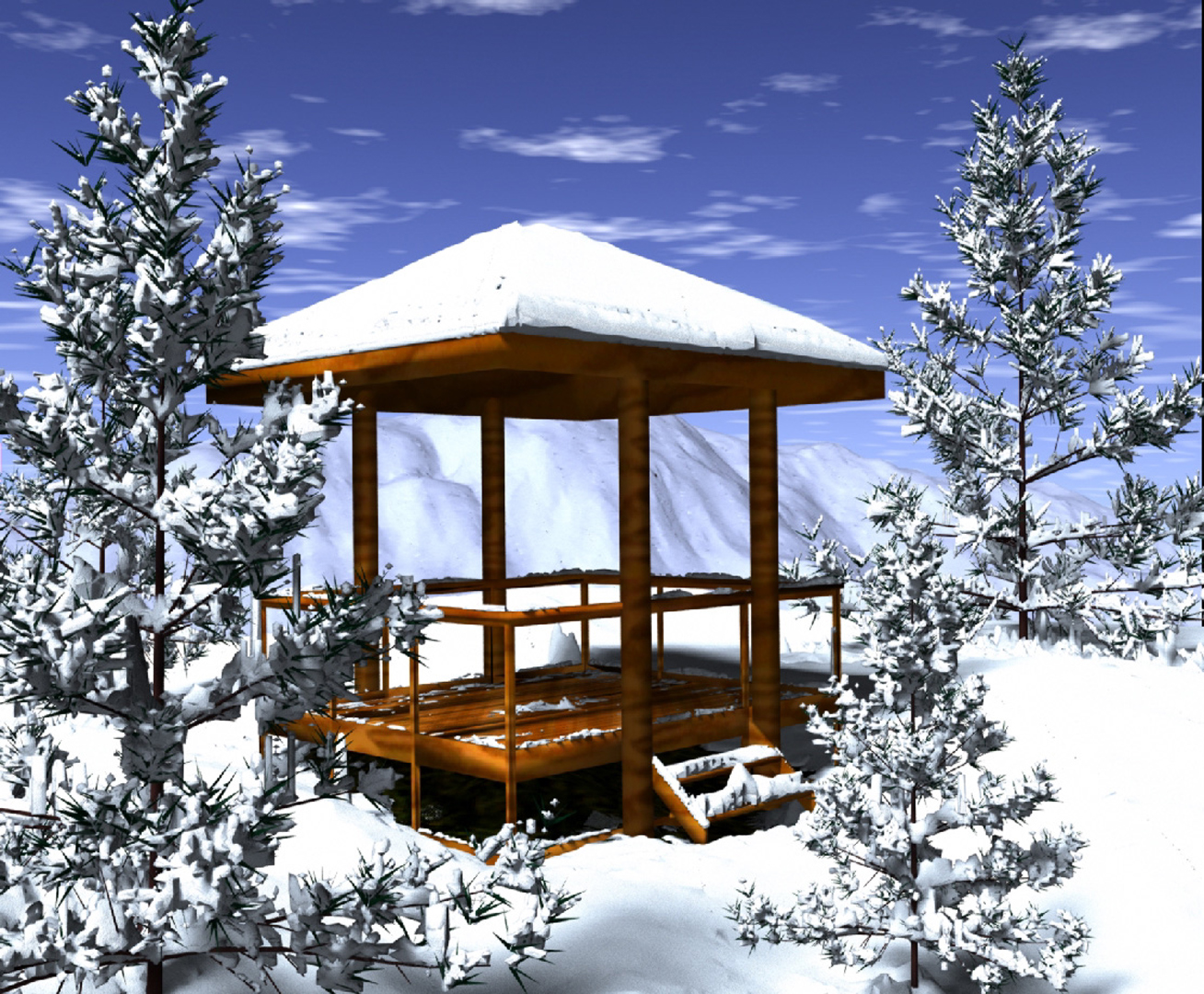“Computer modelling of fallen snow” by Fearing
Conference:
Type(s):
Title:
- Computer modelling of fallen snow
Presenter(s)/Author(s):
Abstract:
In this paper, we present a new model of snow accumulation and stability for computer graphics. Our contribution is divided into two major components, each essential for modelling the appearance of a thick layer of snowfall on the ground.
Our accumulation model determines how much snow a particular surface receives, allowing for such phenomena as flake flutter, flake dusting and wind-blown snow. We compute snow accumulation by shooting particles upwards towards the sky, giving each source surface independent control over its own sampling density, accuracy and computation time. Importance ordering minimises sampling effort while maximising visual information, generating smoothly improving global results that can be interrupted at any point.
Once snow lands on the ground, our stability model moves material away from physically unstable areas in a series of small, simultaneous avalanches. We use a simple local stability test that handles very steep surfaces, obstacles, edges, and wind transit. Our stability algorithm also handles other materials, such as flour, sand, and flowing water.
References:
1. Paul Fearing. The Computer Modelling of Fallen Snow. PhD thesis, Dept. of Computer Science, University of British Columbia, July 2000.
2. Michael Garland and Paul Heckbert. Surface Simplification Using Quadric Error Metrics. SIGGRAPH97 Conference Proceedings, pages 209-216, August 1997.
3. Pat Hanrahan and Wolfgang Krueger. Reflection From Layered Surfaces Due To Subsurface Scattering. Computer Graphics (SIGGRAPH 93 Conference Proceedings), 27:165-174, August 1993.
4. Siu-chi Hsu and Tien-tsin Wong. Simulating Dust Accumulation. IEEE Computer Graphics and Applications, 15 (1): 18-22, January 1995.
5. Wolfgang Krueger. Intensity Fluctuations And Natural Texturing. Computer Graphics (SIGGRAPH 88 Conference Proceedings), 22(4):213-220, August 1988.
6. Daisuke Kuroiwa, Yukiko Mizuno, and Masao Takeuchi. Micrometrical Properties Of Snow. In International Conference on Low Temperature Science (Physics of Snow and ice), volume 1, Part II, pages 722-751. Institute for Low Temperature Science, Aug 1966.
7. Xin Li and Michael Moshell. Modeling Soil: Realtime Dynamic Models For Soil Slippage And Manipulation. SIGGRAPH 93 Conference Proceedings, 27:361- 368, August 1993.
8. A. Luciani, A. Habibi, and E. Manzotti. A Multi-Scale Physical Model Of Granular Materials. In Proceedings of Graphics interface, pages 136-137. Canadian Information Processing Society, 1995.
9. David McClung and Peter Schaerer. The Avalanche Handbook. The Mountaineers, Seattle, Washington, 1993.
10. Malcolm Mellor. Engineering Properties Of Snow. Journal of Glaciology, 19(81):15-66,1977.
11. Claude Monet. Wheatstacks, Snow Effect, Morning. Painting: oil on canvas, J. Paul Getty Museum, Los Angeles, 1891.
12. K. Muraoka and N. Chiba. A Visual Simulation Of Melting Snow. The Journal of the institute of image Electronics Engineers of Japan, 27(4):327-338,1998.
13. K. Muraoka, N. Chiba, and I. Ohtawara. Snowfall Model For Simulating Close Views Of Snowy Landscapes. The Journal of the institute of Television Engineers of Japan, 49(10): 1252-1258,1995.
14. F.K. Musgrave, C.E Kolb, and R.S. Mace. The Synthesis And Rendering Of Eroded Fractal Terrains. Computer Graphics (SIGGRAPH 89 Conference Proceedings), 23(3):41-50, July 1989.
15. T. Nishita, H. Iwasaki, Y. Dobashi, and E. Nakamei. A Modeling And Rendering Method For Snow By Using Metaballs. In Proc. EUROGRAPHICS, volume 16. European Association for Computer Graphics, 1997.
16. S. Premoze, W. Thompson, and P. Shirley. Geospecific Rendering Of Alpine Terrain. In EurographicsRendering Workshop. European Association for Computer Graphics, June 1999.
17. D.A Robinson. Northern Hemisphere Snow Cover Charts. National Snow and Ice Data Center, http://www-nsidc.colorado.edu/NSIDC/EDUCATION/SNOW /snow_Robinson.html, as of April 10, 2000.
18. Robert G. Scharein. interactive Topological Drawing. PhD thesis, Department of Computer Science, The University of British Columbia, 1998.
19. Mikio Shinya and Alain Fournier. Stochastic Motion – Motion Under The Influence Of Wind. In Proc. EUROGRAPHICS, pages 119-128. European Association for Computer Graphics, 1992.
20. Karl Sims. Particle Animation And Rendering Using Data Parallel Computation. Computer Graphics (SIGGRAPH 90 Conference Proceedings), 24(4):405-413, August 1990.
21. R. Sumner, J. O’Brien, and J. Hodgins. Animating Sand, Mud and Snow. In Proceedings of Graphics interface, pages 125-132. Canadian Information Processing Society, 1998.
22. Alan Watt and Mark Watt. Advanced Animation and Rendering Techniques. Addison-Wesley Publishing, Don Mills, Ontario, 1992.
23. D.E. Willand. New Data Structures For Orthogonal Queries. SiAM Journal of Computing, 14(1):232-253,1985.





